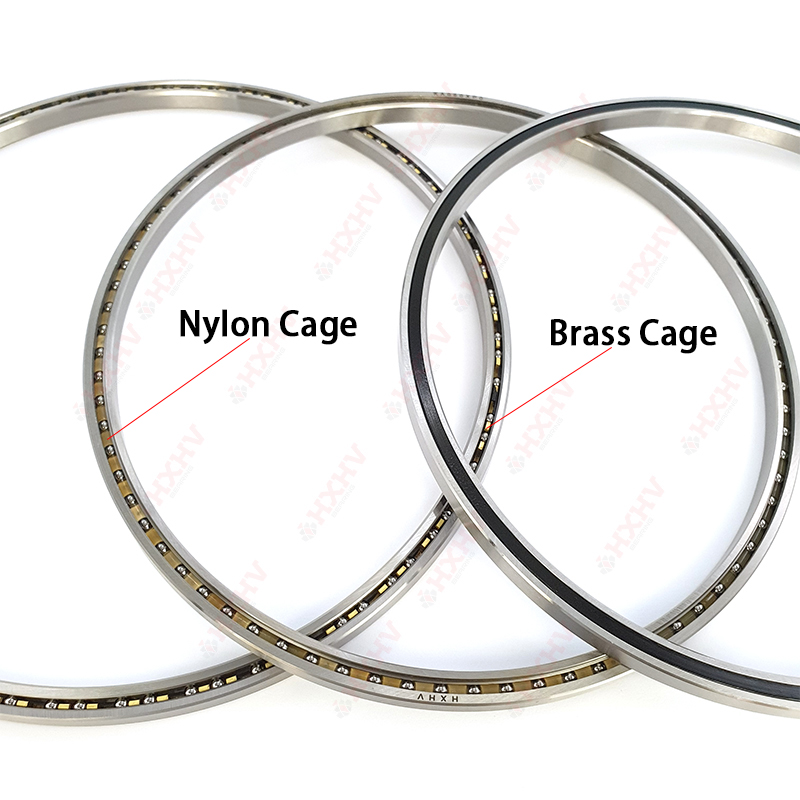Thin-walled ball bearings, a subset of thin-walled bearings, are specialized bearings designed for applications where space is limited. These bearings feature exceptionally thin cross-sections, enabling them to fit into compact spaces while maintaining high performance and load-carrying capacity. Thin-walled ball bearings are widely used in various industries, including:
Robotics: Thin-walled ball bearings are essential for the smooth and precise movement of robotic joints and actuators.
Medical devices: Thin-walled ball bearings are used in various medical devices, such as surgical instruments and implantable devices, due to their small size and biocompatibility.
Textile machinery: Thin-walled ball bearings are employed in textile machinery to reduce friction and ensure smooth operation at high speeds.
Printing machinery: Thin-walled ball bearings are used in printing machinery to achieve high precision and accuracy in printing processes.
Design and Construction of Thin-walled Ball Bearings
Thin-walled ball bearings are characterized by their thin cross-sections, which are achieved through several design considerations:
Thin races: The races, or bearing rings, are significantly thinner than those in standard bearings, reducing the bearing's overall size.
Small ball bearings: Smaller ball bearings are used to minimize the bearing's cross-section while maintaining adequate load-carrying capacity.
Optimized cage design: The cage, which holds the ball bearings in place, is designed to be as thin as possible while ensuring proper ball bearing separation and lubrication distribution.
Materials and Manufacturing Processes
The materials used for thin-walled ball bearings are carefully selected to ensure optimal performance and durability in various operating conditions. Common materials include:
High-carbon steel: High-carbon steel offers a balance of strength, hardness, and wear resistance, making it suitable for general-purpose applications.
Stainless steel: Stainless steel provides excellent corrosion resistance and is often used in applications involving food processing, chemicals, or medical devices.
Chrome steel: Chrome steel offers enhanced hardness and wear resistance, making it suitable for high-load applications.
Manufacturing processes for thin-walled ball bearings are highly precise and involve several steps, including:
Heat treatment: The bearing components are subjected to heat treatment processes to achieve the desired hardness and microstructure.
Grinding: The races and ball bearings are precisely ground to ensure tight tolerances and smooth operation.
Assembly: The bearing components are carefully assembled and lubricated to ensure optimal performance.
Types of Thin-walled Ball Bearings
Thin-walled ball bearings are available in various configurations to suit different application requirements. Some common types include:
Deep groove ball bearings: These bearings are the most versatile type and are suitable for a wide range of applications.
Angular contact ball bearings: These bearings can accommodate both radial and axial loads and are often used in applications where shaft alignment is critical.
Self-aligning ball bearings: These bearings can self-align to accommodate slight shaft misalignment, making them suitable for applications where precise alignment is challenging.
Selection and Application Considerations
When selecting thin-walled ball bearings for a particular application, it is crucial to consider several factors, including:
Bore size: The bore size is the inner diameter of the bearing, which should match the shaft diameter.
Outer diameter: The outer diameter is the bearing's overall size, which should be compatible with the available space.
Width: The width is the bearing's thickness, which determines its load-carrying capacity.
Material: The bearing material should be selected based on the operating conditions, such as temperature, load, and lubrication requirements.
Seals: Sealed bearings protect the internal components from contaminants, while open bearings allow for relubrication.
Load and speed: The bearing should be able to handle the expected loads and speeds of the application.
Precision requirements: The bearing should meet the required level of precision for the application.
Thin-walled ball bearings offer a unique combination of space efficiency, low friction, high precision, and lightweight construction, making them ideal for a wide range of applications. With their diverse benefits and versatility, thin-walled ball bearings are becoming increasingly popular in various industries, including robotics, medical devices, textile machinery, and printing machinery. By carefully considering the selection criteria and application requirements, engineers can choose the appropriate thin-walled ball bearings to ensure optimal performance, reliability, and long service life.
Post time: Aug-14-2024

